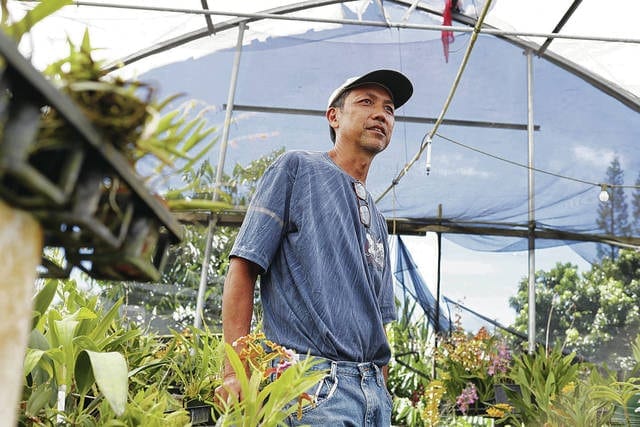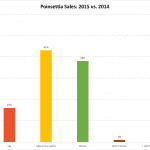
Elton Mow, owner of Orchid Plantation Inc., one of the largest orchid growers in Hawaii, recently compared the loss of his Kapoho nursey to “losing a family member.” (Photo by Cindy Ellen Russell.)
Some orchid growers in Hawaii have been hard hit by the ongoing volcanic activity that began in May. In the Kapoho region on the Big Island — an area responsible for roughly 70 percent of Hawaii’s orchid production — several growers have been “overrun” with lava and now face “substantial losses,” said Eric Tanouye, president of the Hawaii Floriculture & Nursery Association.
“The Hawaii Floriculture Nursery Association hosted a meeting to help affected farmers with options on moving forward,” Tanouye said. “This meeting included federal, state, county and private agencies that provided information on programs that are available to help those affected by this disaster.”
Elton Mow, owner of Orchid Plantation Inc., one of the largest orchid growers in Hawaii, recently compared the loss of his Kapoho nursey to “losing a family member.” Mow, a second-generation grower, told the Honolulu Star Advertiser that he lost 12 acres in a matter of days.
“It’s a big loss, a big adjustment,” he told the newspaper. “But we’re starting anew.”
Elizabeth Kekedi of Alohilani Orchids Inc. told the newspaper that while the lava has come within walking distance of her 21-acre farm, so far the challenges have been those of inconvenience — cut-off roads—but she worries about sulfur dioxide affecting her flowers.
“We’re lucky or just blessed,” she said. “Either way, we’re grateful. We had a couple of days when the winds shifted our way, but it looks like the plants didn’t really get affected.”
Hawaii County is responsible for about 78 percent of Hawaii’s floriculture square footage, with cut flowers valued at nearly $16 million, according to the 2012 Census of Agriculture.
Tanouye said there are silver linings, and even signs of recovery, and he emphasized that most growers are still very much open for business and dependent on industry support.
“The lava has impacted farms in the lower Puna area of Hawaii Island but there are many farms outside of that area that are still growing, harvesting and shipping flowers,” he said. “We see some farms in the area that were not affected and are continuing to operate as usual. We also see some farmers that were impacted already starting to reboot, so these are encouraging signs.”



